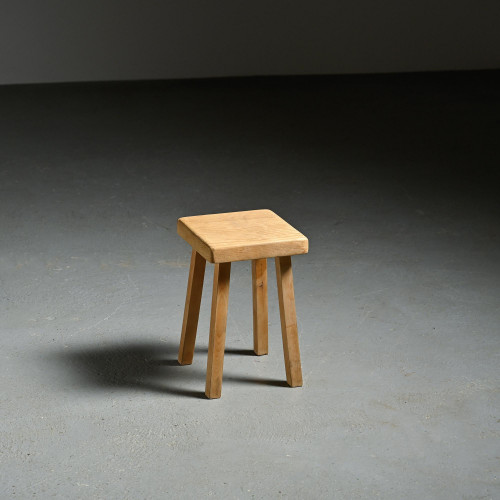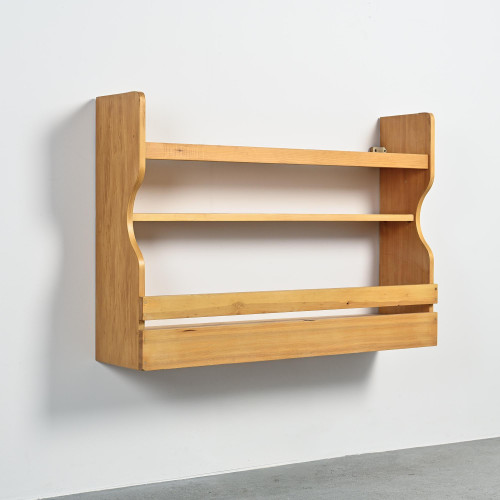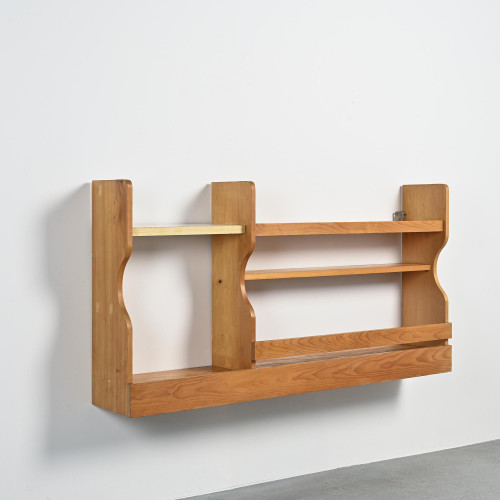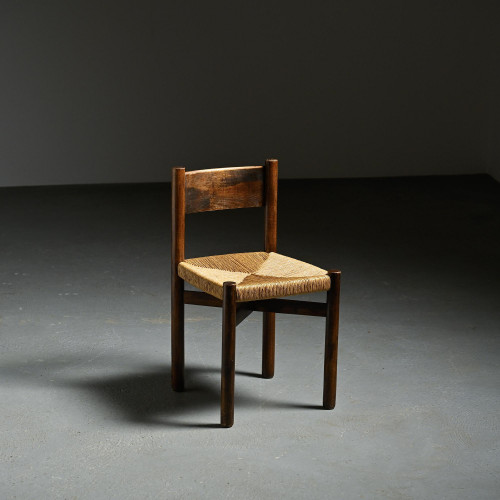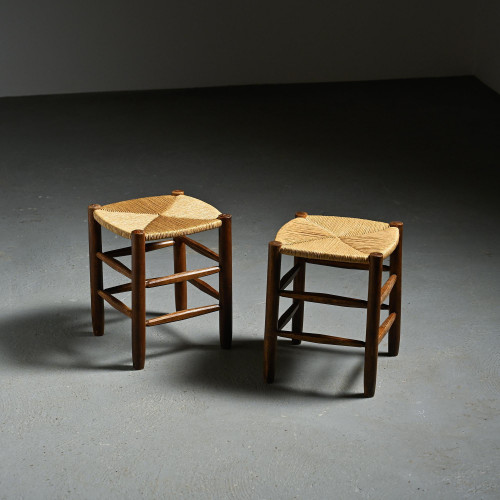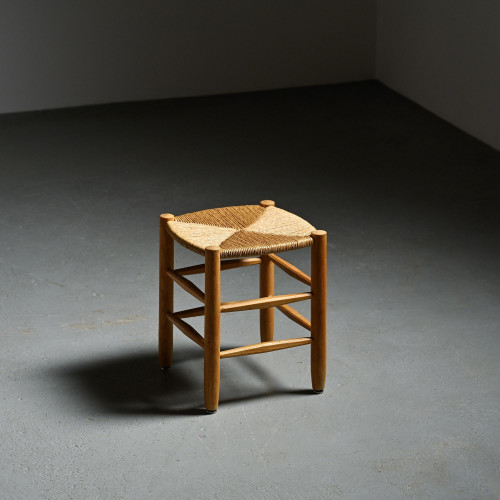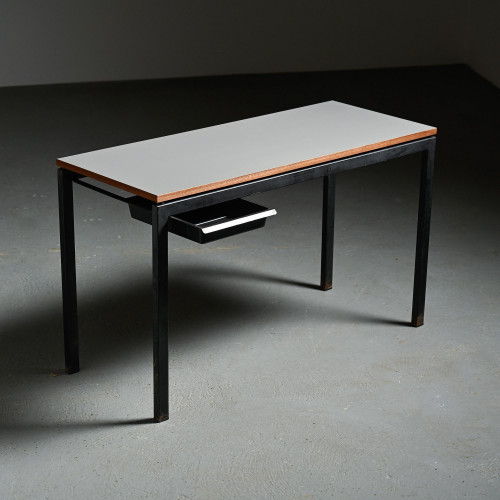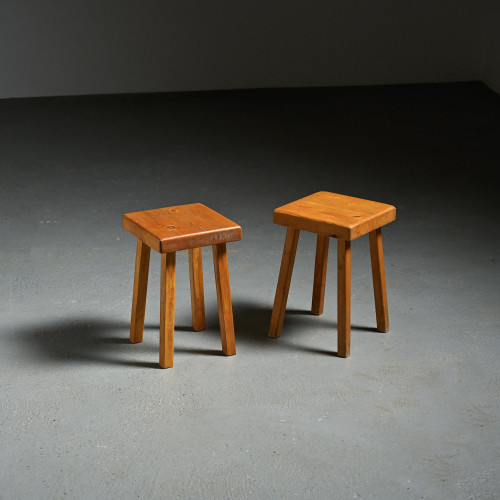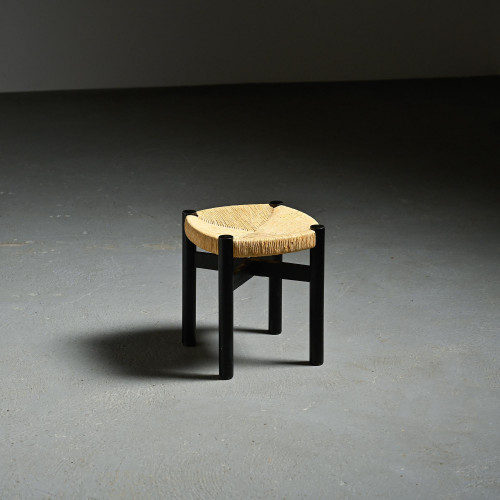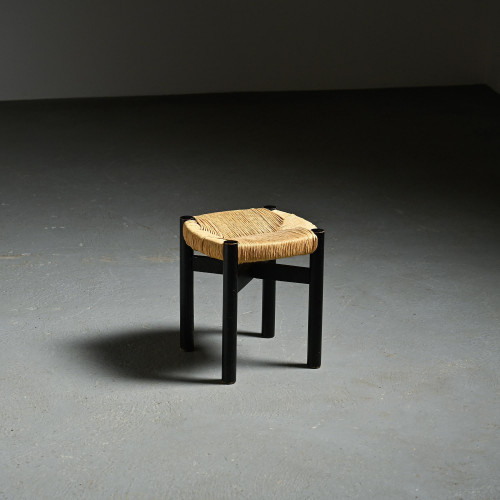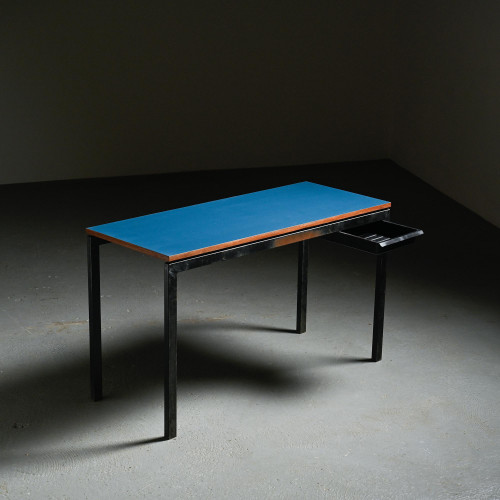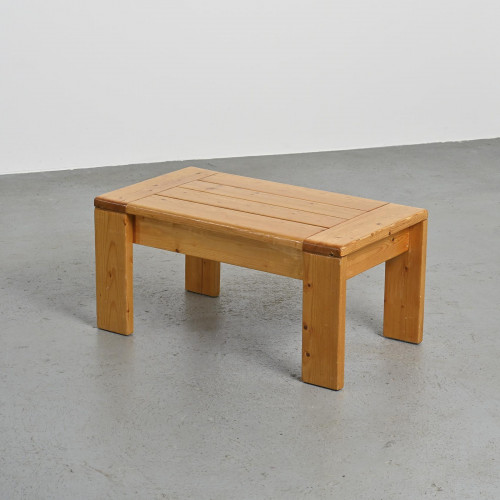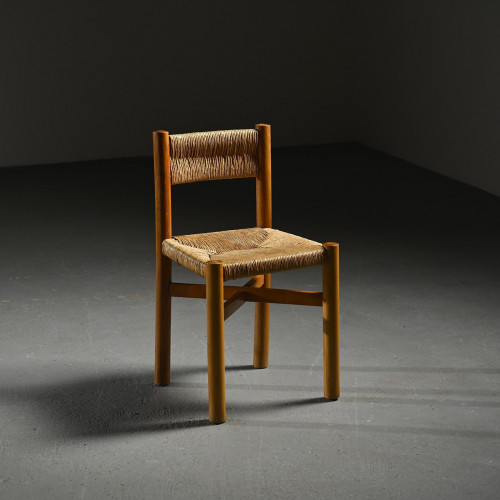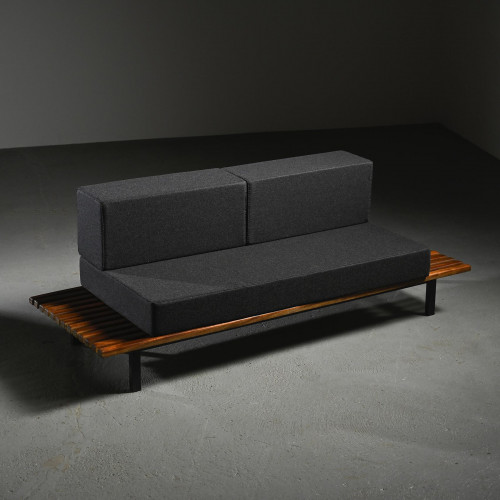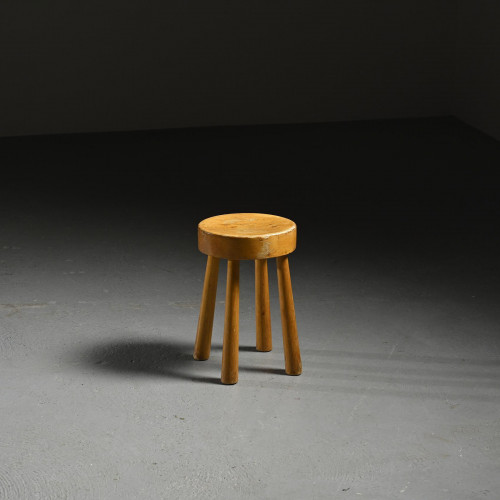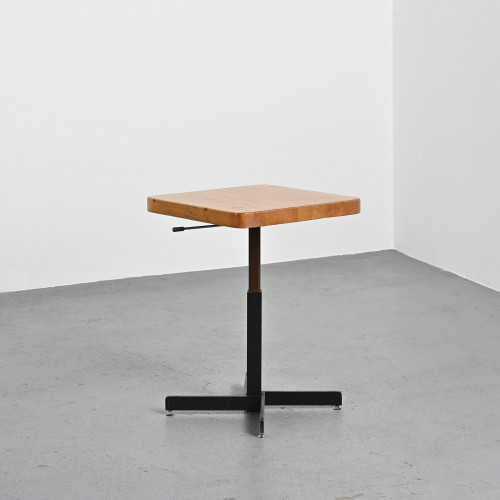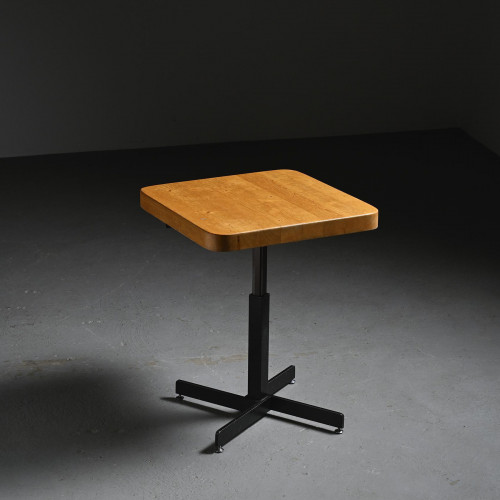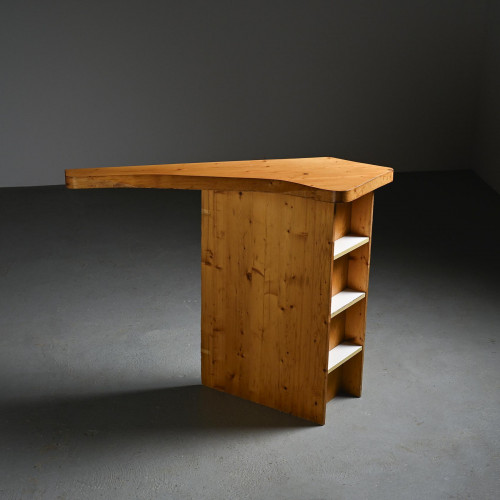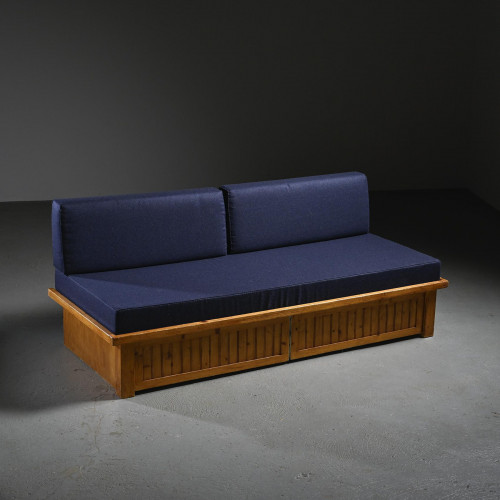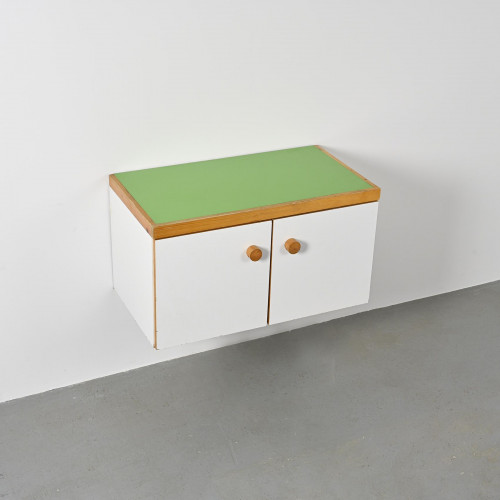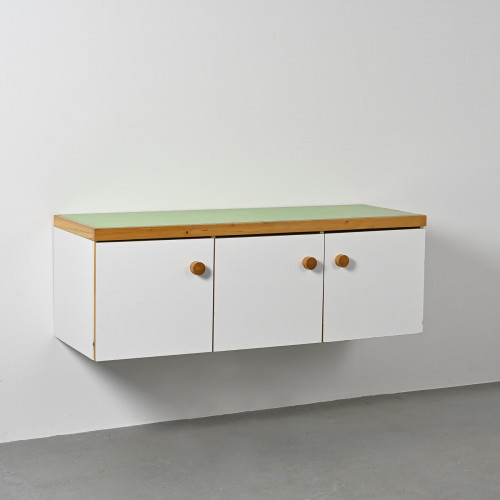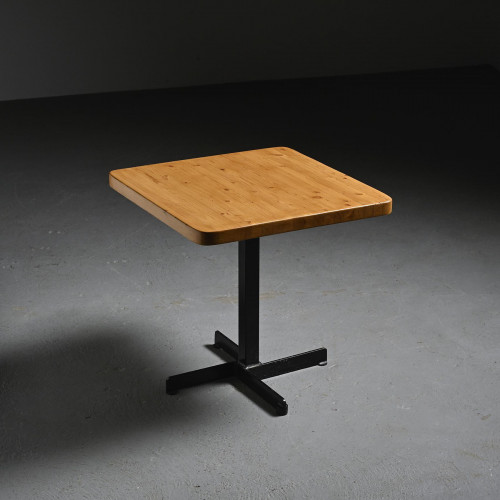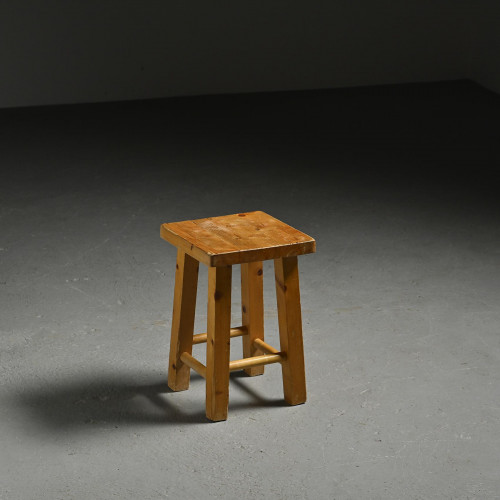Charlotte Perriand (1903 - 1999)
The daughter of a tailor and a needlewoman working in the haute couture sector, Charlotte Perriand was born in Paris in 1903. A major designer in France and around the world, she actively participated in defining the new art of living in the twentieth century.
Charlotte Perriand trains at the École de l'Union centrale des arts décoratifs from 1920 to 1925. In her final year of studies, she participates in the Exhibition of Decorative Arts with her school project, a series of wall panels representing the nine muses. Only two years later she is again acclaimed for her work at the 1927 Salon d'Automne where she exhibits "Le Bar sous le toit" (A bar under the roof), pieces of furniture she designed for her Parisian apartment-workshop. Inspired by industrial aesthetics, she uses bicycle aluminum tubes. Architects Pierre Jeanneret and Le Corbusier notice her potential. She joins their company and is soon in charge of the "domestic equipment" department, a domain for which she "possesses exceptional qualities of inventiveness, initiative and realization" as Le Corbusier would acknowledge. At the time, design is not really recognized as an autonomous creative field and is still secondary to architecture. Charlotte Perriand participates in many projects such as Villa Church, Villa Savoye or the Salvation Army Refuge City. It is during this period that she creates an icon of the late 20s, the LC4 chair: a chaise longue with an arch structure consisting of chrome-plated steel tubes and black leather upholstery. In 1929, she participates
The daughter of a tailor and a needlewoman working in the haute couture sector, Charlotte Perriand was born in Paris in 1903. A major designer in France and around the world, she actively participated in defining the new art of living in the twentieth century.
Charlotte Perriand trains at the École de l'Union centrale des arts décoratifs from 1920 to 1925. In her final year of studies, she participates in the Exhibition of Decorative Arts with her school project, a series of wall panels representing the nine muses. Only two years later she is again acclaimed for her work at the 1927 Salon d'Automne where she exhibits "Le Bar sous le toit" (A bar under the roof), pieces of furniture she designed for her Parisian apartment-workshop. Inspired by industrial aesthetics, she uses bicycle aluminum tubes. Architects Pierre Jeanneret and Le Corbusier notice her potential. She joins their company and is soon in charge of the "domestic equipment" department, a domain for which she "possesses exceptional qualities of inventiveness, initiative and realization" as Le Corbusier would acknowledge. At the time, design is not really recognized as an autonomous creative field and is still secondary to architecture. Charlotte Perriand participates in many projects such as Villa Church, Villa Savoye or the Salvation Army Refuge City. It is during this period that she creates an icon of the late 20s, the LC4 chair: a chaise longue with an arch structure consisting of chrome-plated steel tubes and black leather upholstery. In 1929, she participates
with the two architects and other leading artists such as René Herbst, Pierre Chareau and Eileen Gray in the foundation of the Union des Artistes Modernes UAM, which is chaired by Mallet-Steven. Charlotte publishes in this context the Manifesto "Wood or metal" in the London magazine The Studio.
Feminist and politically committed to the left, she quickly feels the need to sign her work with her own name. She begins to receive several orders in her personal capacity, including from ministries. Appointed advisor for industrial art by the Japanese government, she travels to Asia from 1940 to 1946 where she is welcomed by Junzo Sakakura, an architect she had previously met in Le Corbusier's studio. She gives numerous lectures on the decorative arts and influences several Japanese designers such as Sori Yanagi, Daisaku Choh or Kazuo Shinohara. Charlotte Perriand immerses herself in Japanese culture and Ma, the feeling of emptiness. She starts designing closer-to-ground furniture in spaces where the importance or rhythm is emphasized. Even after returning to France, this new sensibility will not leave her and will redefine her style.
From 1955 to 1960, Charlotte Perriand and Jean Prouvé are entrusted with the artistic direction of the Steph Simon Gallery in Paris. In this context, she leads a project for Air France. In the early 60s, the Mauritanian iron mining company "Miferma" intends to build a new town, Cansado, to facilitate the exploitation of iron from the Kedia Idjil massif. Miferma calls on architects Guy Lagneau, Michel Weill and Jean Dimitrijevic to design the project. They themselves turn to Steph Simon, among others, to provide furniture for these new homes. Prouvé and Perriand both work on this project: Charlotte designs sturdy furniture, simple and quick to manufacture, produced in small series. She builds on her previous japanese bench design, adapting its style to that of the other furniture made for Cansado town. Indeed, they all have a black metal base. She uses mahogany, ash and light laminates, playing on a sober and neutral polychromy of white, black and mouse gray.
From 1967 to 1986, she works on the design of the ski resort of Les Arcs, in Savoie. This time, she is mandated to manage both the architecture and interior design. All her previous research finds its usefulness in this large-scale project. The dwellings are designed on the concept of a housing cell identified during the research carried out for workers' housing with Le Corbusier in 1929 and 1930. The first idea in this previous project was to make a maximum of workers live decently in a minimum of space. She was then able to create apartments where it was possible to feel the complete space of the housing, in each place, while keeping an intimacy. Rich of this experience, she revisits this idea for the Arcs. Boxes, furniture, and storage are standardized. Japan is still a source of inspiration for the open kitchen-bar. The kitchens and bathrooms are made of prefabricated modules inspired by research that Perriand conducted with Jeanneret in the 30s.
Perriand's reflections on the link between Man and Nature and her passion for mountain can be felt all over. Different means, such as the large bay windows accentuate the proximity to the mountain. She also uses solid wood naturally treated as well as mulched chairs and stools, evoking the rusticity of the environment. In the minimalist continuity of her work in Canada, she adds few colors, simply red, white and black.
In 1982, she founds the École nationale supérieure de création industrielle - Les Ateliers (ENSCI - Les Ateliers) in Paris, where you can learn design in all its forms, from objects to textiles, digital technology and space.
In 1993, she creates L'Espace Thé de l'Unesco with sliding doors, tatami mats, pebbles and bamboo., an opportunity to reuse the Japanese language she has never forgotten…


